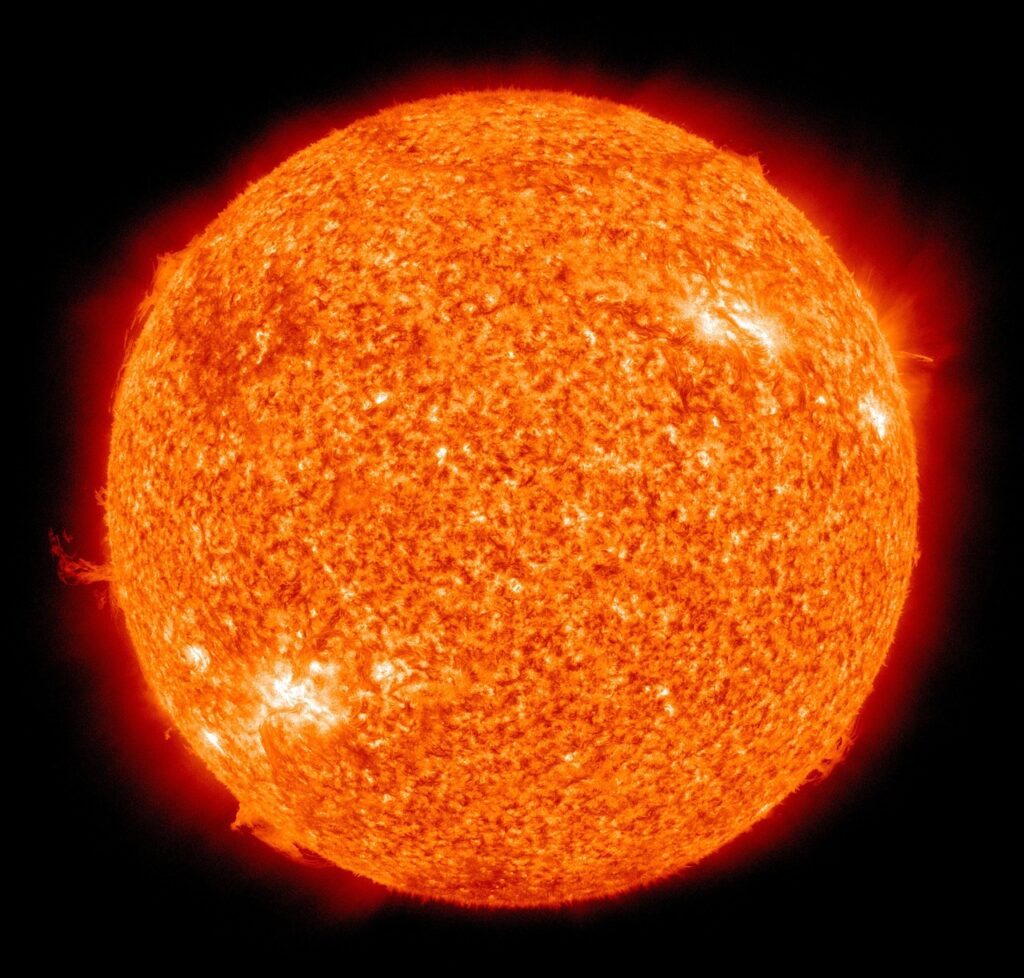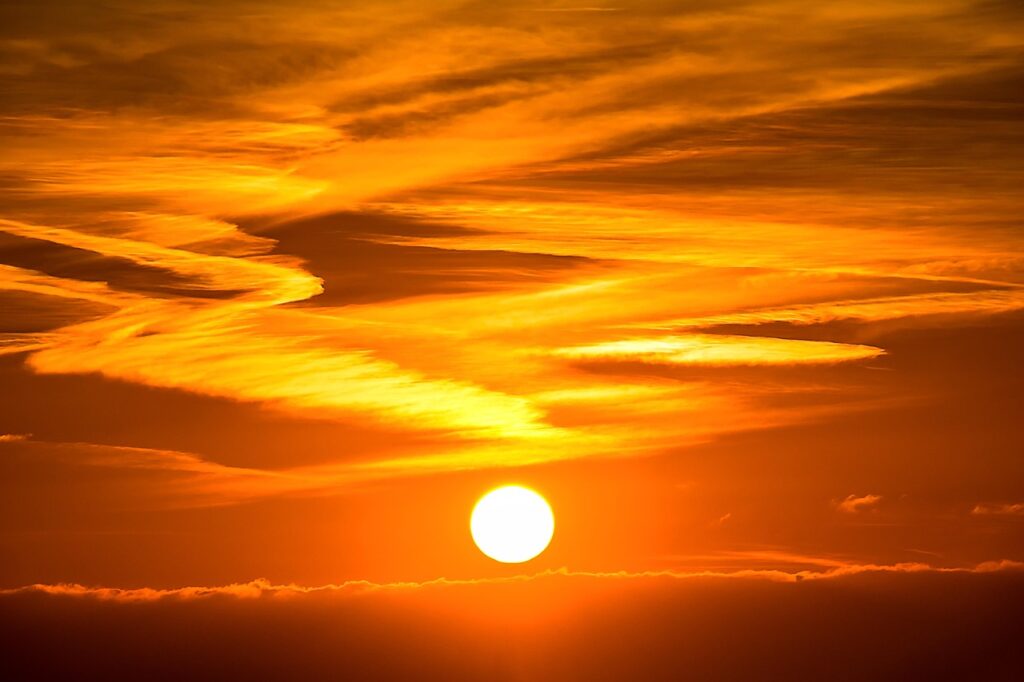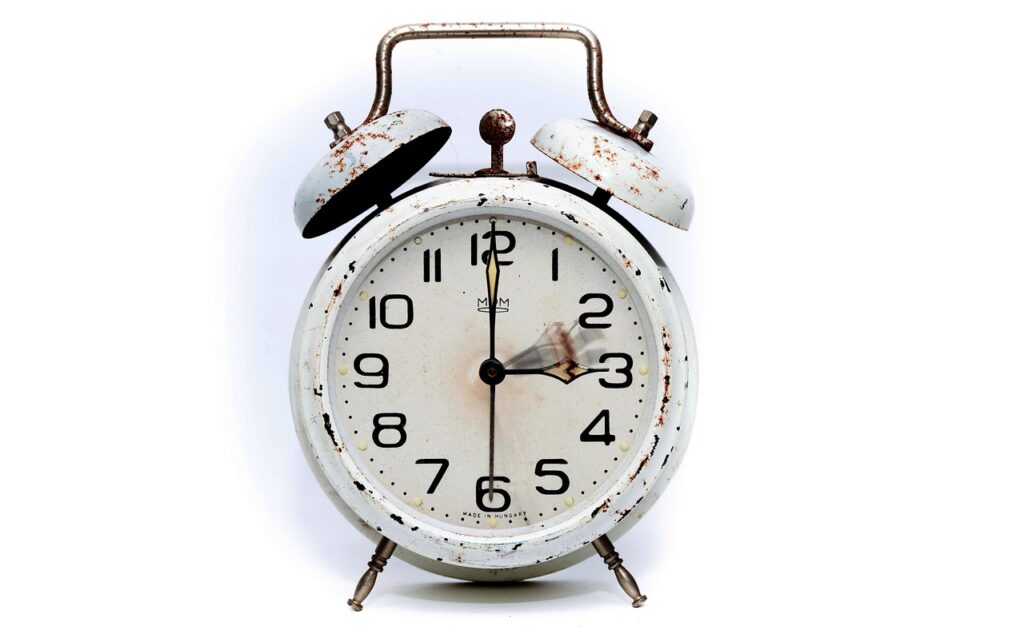
Picture this: a canvas of inky blackness above, suddenly alive with vibrant ribbons of green, sometimes kissed with hints of red and purple, dancing with ethereal grace across the Icelandic sky. This isn’t just a dream; it’s the Northern Lights, or Aurora Borealis, one of Earth’s most mesmerizing natural spectacles, and Iceland, nestled right under the auroral oval, stands as one of the prime locations in the world to witness it.
For many, seeing the Northern Lights is a bucket-list aspiration, an experience that transcends the ordinary and touches the soul. While often associated with extreme winter conditions, Iceland offers a unique blend of accessibility, stunning landscapes, and dark skies that make it an unparalleled destination for aurora chasers. But catching this elusive celestial ballet requires more than just showing up; it demands a blend of understanding, strategic timing, and a touch of good fortune.
And there’s truly never been a better time to plan your aurora adventure. With the sun heading towards its solar maximum in the coming years, the frequency and intensity of these dazzling displays are set to reach extraordinary levels. Join us as we journey through the essential knowledge, practical tips, and insider secrets to ensure your Icelandic Northern Lights experience is nothing short of magical.
1. **Understanding the Aurora: The Science Behind the Spectacle**
Before we delve into the ‘when’ and ‘where,’ it’s fascinating to grasp the ‘how’ behind the Northern Lights. This celestial light show is fundamentally a cosmic dance between the sun and Earth. It occurs when electrically charged particles, ejected from the sun’s surface during solar flares and coronal mass ejections, hurtle through space and collide with gases in Earth’s upper atmosphere.
Upon impact, these solar particles excite the atmospheric gases, causing them to emit light. The vibrant green hues, most commonly seen, are typically produced by oxygen molecules, while rarer reds can also come from oxygen at higher altitudes. Nitrogen, on the other hand, contributes to the purple and blue tones. The intensity and color depend on the type of gas, the altitude of the collision, and the energy of the particles.
Iceland’s advantageous position beneath the auroral oval—a band around the Earth’s magnetic poles where auroral activity is concentrated—is what makes it such a hotspot for sightings. This geographical placement means that even moderate solar activity can produce spectacular displays visible from various parts of the island, a significant advantage for aspiring aurora hunters.
Moreover, astronomer and science communicator Sævar Helgi Bragason emphasizes the importance of studying space weather data to predict and view the Northern Lights effectively. This scientific approach, combined with Iceland’s prime location, increases the chances of witnessing these incredible phenomena, making the preparation for your trip an exciting blend of anticipation and informed decision-making.
2. **The Prime Season: Why Icelandic Winters Reign Supreme**
When it comes to the Northern Lights, darkness is your greatest ally. This fundamental requirement naturally steers aurora hunters towards Iceland’s winter months, when the nights stretch long and deep, providing ample opportunities for the aurora to manifest. The official Iceland Northern Lights season runs consistently from September to early April, a broad window designed to maximize visibility.
During the peak of midwinter, Iceland experiences a remarkably limited number of daylight hours—sometimes as few as 4-5. This extended period of darkness creates ideal conditions for the aurora to shine brightly, offering a vast canvas for the light show. This means travelers can seek the aurora from late afternoon until nearly noon the next day, significantly increasing the odds of a successful sighting.
Beyond the sheer darkness, winter in Iceland offers a uniquely beautiful landscape, with nature often blanketed in snow. This adds an extra layer of magic to the experience, as the white, pristine surroundings can reflect the aurora’s glow, enhancing its visual impact. Many of Iceland’s main attractions, such as the Golden Circle and the South Coast, remain accessible, often offering stunning snow-covered vistas during the day.
While winter might imply colder temperatures, the unique charm of Iceland during this season, combined with the primary conditions for aurora visibility, makes it the undisputed best time. It’s a period when the island truly comes alive with a dramatic beauty, preparing the stage for the night’s main act, the elusive and enchanting Northern Lights.
3. **Optimal Timing: Best Months & Hours for the Dance of Lights**
Within the broader September to April window, fine-tuning your visit can further enhance your chances of a spectacular aurora experience. While the darkest nights occur from November to January, offering the longest viewing windows, there’s a nuanced discussion among experts regarding truly optimal periods. The Icelandic tourism authority, for instance, suggests the best time to see the northern lights in Iceland is from September to April, between 9 p.m. and 2 a.m., particularly around midnight.
Sævar Helgi Bragason specifically recommends the equinox months—March, April, September, and October—as prime times for experiencing the aurora. These periods are characterized by increased geomagnetic disturbance, which can lead to stronger auroras. However, it’s a trade-off, as the nights during these equinox periods are shorter than in midwinter, meaning a slightly condensed daily window for visibility. Ryan Connolly, co-founder of Hidden Iceland, also cautions against late March to mid-April and early September, advising against having to stay up too late to watch the sun set, highlighting the practicality of longer dark hours.
Regarding the best time of night, while the aurora can technically be visible whenever the sky is dark, the Earth’s rotation, atmosphere, and magnetosphere relative to Iceland mean they are most likely to appear between 10 PM and 12 AM, with some sources extending this to 1 AM or even 2 AM. This timing is convenient for most northern lights tours, allowing for optimal viewing before returning early enough to maintain plans for the following day. For those with a 4×4 rental on self-drive tours, the flexibility exists to search throughout the night, though dressing warmly for the colder early hours is crucial.

4. **The Solar Maximum Advantage: Why 2025/2026 is Unmissable**
If you’re contemplating an aurora adventure, the coming years present an exceptionally compelling reason to visit Iceland. We are currently approaching a period of increased solar activity known as the solar maximum, and experts are heralding 2025 and 2026 as prime years for witnessing truly spectacular light shows. This heightened activity translates directly into more frequent and more intense auroral displays, tipping the odds significantly in favor of aurora seekers.
Ryan Connolly, co-founder of Hidden Iceland, explicitly states, “Interestingly, the sun is reaching its solar maximum (increased activity that’s conducive for northern lights) over the next few years, so 2025 and 2026 are prime years for getting a great light show.” This isn’t just a hopeful prediction; it’s a scientific phenomenon. The solar cycle, which lasts approximately 11 years, sees periods of low activity (solar minimum) and high activity (solar maximum), directly influencing the frequency and strength of solar winds that cause auroras.
During a solar maximum, there are more sunspots, solar flares, and coronal mass ejections. These events propel more charged particles towards Earth, leading to a greater chance of vibrant and widespread auroral displays. For travelers, this means that even with less-than-perfect conditions (like partial cloud cover or slightly weaker solar wind), the sheer increase in activity enhances the likelihood of seeing a memorable show. It’s akin to having a stronger, more reliable signal for nature’s grandest broadcast.
Therefore, if Iceland and the Northern Lights are on your travel radar, aligning your trip with these peak activity years could be the smartest decision. It offers a unique window of opportunity to witness the aurora at its most magnificent, potentially delivering a display that will be talked about for decades. This extraordinary period truly marks now as the best time to chase the lights in Iceland.

5. **The Trifecta of Visibility: Solar Activity, Clear Skies, and Darkness**
Seeing the Northern Lights in Iceland hinges on a perfect alignment of three crucial elements: strong solar activity, clear skies, and absolute darkness. Understanding this trifecta is the cornerstone of any successful aurora hunt, empowering you to make informed decisions and maximize your viewing potential. Without all three, even the most dedicated efforts might fall short, underscoring their collective importance.
First, **Strong Solar Activity** is the engine that drives the aurora. The Kp-index forecast is your go-to metric, measuring the level of geomagnetic activity on a scale from zero to nine. For a promising display, the optimum Kp-index level is above three. You can check this vital forecast on dedicated northern lights forecast platforms for Iceland, which update daily and can predict activity up to three days in advance, although solar activity can occur rapidly and may not factor into longer predictions. A strong aurora appearing may also indicate a higher likelihood of the lights appearing again 27 days later, due to the sun’s rotation cycle.
Second, **Clear Skies** are non-negotiable. Even with intense solar activity, thick cloud cover will completely obscure the aurora. The Icelandic Meteorological Office provides a regularly updated cloud cover forecast, which is an invaluable tool. It allows you to identify areas across the country with the clearest skies, enabling strategic planning for your viewing locations. Checking both the aurora and weather forecasts on the day of your planned hunt is absolutely essential, as Icelandic weather can change quickly and unpredictably.
Finally, **As Little Light as Possible** is paramount. The darker your surroundings, the easier it is for your eyes to detect the often-faint glow of the aurora. While the Northern Lights can sometimes be glimpsed faintly from cities like Reykjavik, the best and most dramatic displays are consistently observed from remote countryside locations, far away from any distracting artificial lights. Urban light pollution acts like a dimmer switch on the aurora, significantly reducing its visibility and intensity, making a retreat to the wilderness a key strategy for the most breathtaking views.

6. **Chasing the Aurora: Best Remote Locations Across Iceland**
To truly immerse yourself in the spectacle of the Northern Lights, venturing away from city lights is a fundamental rule. Iceland’s sparse population and expansive wilderness offer a plethora of stunning, dark-sky locations that serve as perfect backdrops for the aurora’s dance. From dramatic coastlines to serene glacial lagoons, these spots elevate the viewing experience, making it even more unforgettable.
Just a short drive (28 miles or 45 kilometers) from Reykjavik, **Thingvellir National Park** stands out. As part of the iconic Golden Circle, it combines easy access with dark skies and varied scenery, from volcanoes to lakes and famous waterfalls. While its popularity for aurora viewing can mean crowds, its geological significance as the rift between two continental plates adds a unique dimension to your wait for the lights. The expansive, unblemished skies here are frequently cited as ideal.
Further west, the **Snaefellsnes Peninsula** is another exceptional choice. Often dubbed “Iceland in Miniature” for its diverse landscapes, it boasts dramatic coastlines, minimal light pollution, and iconic landmarks like the unusually pointy Kirkjufell mountain or the black sand of Djúpalónssandur beach, which provide breathtaking foregrounds for aurora displays. Staying overnight in one of the peninsula’s charming villages offers prolonged viewing opportunities away from the hustle and bustle.
Along the rugged **South Coast**, the nature surrounding the village of Vik and the magnificent **Jokulsarlon Glacier Lagoon** provides truly stunning backdrops. Imagine the aurora shimmering above icebergs that have broken off the huge Vatnajökull glacier, or reflecting off the black sands of Diamond Beach, where the lagoon drains into the Atlantic. Near Vik, Reynisfjara, with its basalt columns, offers another spectacular spot, though caution is advised due to powerful ‘sneaker waves’ on the beaches. A stop at the nearby Seljalandsfoss waterfall en route adds to the allure.
In the north, **Myvatn Lake** boasts clear skies and the added bonus of the Myvatn Nature Baths, where you can warm up while patiently awaiting the aurora. For those seeking the most remote and untouched landscapes, the **Westfjords** offer some of Iceland’s darkest skies and a sense of profound isolation. The **Icelandic Highlands** can also be spectacular, particularly in early autumn or spring, but accessibility is often dependent on road conditions, requiring careful planning for an adventurous spirit.

7. **Viewing the Aurora from Reykjavik: City Strategies**
While the most breathtaking aurora displays often necessitate a journey into Iceland’s remote, light-pollution-free wilderness, it’s a common misconception that witnessing the Northern Lights from Reykjavik is entirely impossible. For travelers based in the vibrant capital, there are indeed several shrewd strategies and specific locations within and just outside the city limits where you can significantly increase your chances of glimpsing this ethereal celestial dance. Ryan Connolly, co-founder of Hidden Iceland, confidently notes that “It’s a myth that it’s impossible to see them in the city,” affirming that even urban explorers can be blessed with a taste of the magic.
For those committed to staying within Reykjavik’s engaging orbit, specific areas naturally offer better visibility by minimizing direct light interference. Coastal spots and expansive parks are unequivocally your best bet. The Grotta Nature Reserve, gracefully situated on the Seltjarnarnes peninsula on the western edge of the city, serves as a prime example, offering scenic vistas around its iconic lighthouse that are just far enough removed from the brightest city lights. Similarly, engaging areas along the harbor downtown, such as the famous Sun Voyager Sculpture, provide wide-open views of the ocean, acting as potential, unexpected viewing platforms.
To truly optimize your city-based aurora hunt, consider complementing your direct search with unique cultural experiences. The Aurora Reykjavik Museum, for instance, offers a dedicated Northern Lights tour with an optional visit, enriching your understanding of the phenomenon. Additionally, the Perlan Museum observatory provides an award-winning Northern Lights show as part of its admission. While Perlan itself might close before the absolute peak viewing hours, its immersive planetarium documentary offers a fantastic educational experience, profoundly enhancing your overall appreciation for the aurora. Even a faint, shimmering glow from the city can be a deeply moving and unforgettable sight.

8. **The Guided Experience: Northern Lights Tours**
For a great many visitors, especially those embarking on their first aurora adventure, joining a meticulously planned guided Northern Lights tour stands out as the most effective and delightfully stress-free way to hunt for the aurora. These tours skillfully leverage invaluable local expertise, effortlessly taking the guesswork out of tracking activity and expertly navigating to optimal viewing locations, thereby increasing your chances of a successful sighting quite significantly. Beyond merely finding the lights, expert guides also often impart fascinating insights into the science, folklore, and cultural significance behind the aurora, profoundly enriching the entire experience.
From Reykjavik, a diverse array of guided tours caters thoughtfully to a myriad of different preferences. Popular and highly recommended options include the Northern Lights Boat Cruise, which gracefully ferries you beyond the city lights into the dark, expansive embrace of Faxaflói Bay for truly unobstructed views. For those craving a more exhilarating and adventurous experience, the Northern Lights Super Jeep Tour from Reykjavik offers a thrilling off-road journey in a custom 4×4, granting access to remote and often otherwise inaccessible viewing spots that feel truly untouched. There are also comprehensive full-circle guided winter tours that ingeniously combine exhilarating aurora hunting with captivating daytime activities like glacier hiking and exploring ancient ice caves, offering a seamless blend of adventure.
For travelers planning a more extended stay, multi-day guided tours present an even greater chance of a truly spectacular sighting, harmoniously blending aurora quests with deeper, more immersive exploration of Iceland’s winter wonders. Esteemed companies like Hidden Iceland, with their highly praised “Iceland Must See 6+ Day Private Tour/Winter Itinerary,” seamlessly weave together thrilling daytime adventures, such as discovering otherworldly blue ice caves, with comfortable overnight stays in ideal remote locations specifically chosen for aurora spotting. Arctic Adventures and GJ Travel also provide highly-rated multi-day options, frequently covering iconic sights like majestic waterfalls, dramatic black sand beaches, and sparkling ice caves across the Snaefellsnes peninsula or the captivating South of the country, ensuring a well-rounded and expertly managed Icelandic adventure from start to finish.

9. **Embracing Freedom: Self-Drive Aurora Adventures**
For intrepid travelers who genuinely relish independence and the unparalleled freedom to explore at their own leisure, a self-drive tour presents an extraordinary way to chase the Northern Lights across Iceland’s breathtaking and diverse landscapes. Renting a reliable 4×4 vehicle is not just recommended but often essential, especially during the challenging winter months. This provides the crucial safety and invaluable peace of mind needed to confidently navigate potentially icy or snow-covered roads and to reach more remote, pristine viewing spots. This remarkable flexibility allows you to adapt your plans instantly, based on the very latest aurora and cloud cover forecasts, truly putting you in control of your adventure.
Several highly reputable tour companies thoughtfully offer customized self-drive itineraries meticulously designed specifically for dedicated aurora hunters. These thoughtfully curated packages, such as the comprehensive 7-Day Northern Lights Self-Drive Tour or the adventurous 6-Day Northern Lights Self-Drive With Ice Caving, provide a structured yet wonderfully flexible framework for your unforgettable journey. They frequently include pre-booked accommodations and invaluable suggestions for prime viewing locations, allowing you to focus wholeheartedly on the magical experience without the usual logistical headaches. The 5-Day Northern Lights South Coast Tour, for a shining example, expertly blends exhilarating aurora chasing with captivating visits to iconic glaciers and majestic waterfalls, promising a perfectly balanced and deeply enriching adventure.
When embarking on your self-drive aurora adventure, always remember to heed crucial expert tips to maximize your success and safety. While the irresistible allure of “chasing” the lights can be incredibly strong, Ryan Connolly, a seasoned expert, wisely advises against driving around aimlessly in the dark. Instead, once you’re comfortably in an area blessed with clear skies and minimal light pollution, settle in and truly embrace the waiting game, perhaps from the cozy comfort of a secluded room with a balcony or a soothing outdoor hot pool. It is also absolutely imperative to consistently check road conditions via the Icelandic government’s official portal, and always remember that off-roading is strictly illegal and harmful to the delicate environment. Managing your expectations is also profoundly important; the aurora can, at times, appear silvery and ethereal to the naked eye, even if it looks spectacularly vibrant through a long-exposure camera lens.

10. **Aurora-Friendly Stays: Hotels and Accommodations**
Choosing the right accommodation can profoundly enhance your Northern Lights experience, especially for those meticulously planning a self-guided trip. Iceland proudly boasts a remarkable selection of hotels and lodges specifically designed with avid aurora spotters in mind, offering unique features that inherently maximize your chances of a truly memorable sighting while simultaneously ensuring unparalleled comfort and warmth. These thoughtfully designed “aurora-friendly” stays frequently come equipped with dedicated special viewing locations and invaluable services that cater directly and intuitively to the passionate aurora hunter.
Many of these highly specialized hotels thoughtfully provide an indispensable “aurora wake-up service,” diligently ensuring you don’t miss a sudden, spectacular display even if you’ve already turned in for the night. Imagine the sheer delight of sleeping soundly, secure in the knowledge that you’ll be gently alerted if the lights decide to make a grand appearance. Hotel Rangá, elegantly tucked near the south coast, perfectly exemplifies this thoughtful service, proudly boasting an impressive observatory on its roof for optimal viewing and a welcoming 24/7 bar serving comforting hot drinks to ward off the chill. Similarly, Hotel Húsafell, idyllically located deep within the Icelandic wilderness, and Hotel Búðir on the stunning Snaefellsnes peninsula, both offer this incredibly convenient service, allowing guests to truly relax and let the hotel dutifully perform the nocturnal vigil.
For a truly immersive and unforgettable experience, some exceptional accommodations elevate aurora viewing to an extraordinary, almost magical level. The Panorama Glass Lodge, for instance, offers astonishing all-glass cabins, complete with inviting hot tubs and luxurious heated floors, allowing you the unique privilege of witnessing the aurora from the sublime, cozy warmth of your very own room. While the universally famous Blue Lagoon itself closes before the absolute prime aurora viewing hours, discerning guests at its exquisite on-site luxury hotels, The Retreat and Silica Hotel, gain exclusive private lagoon access and the significant advantage of being perfectly positioned to catch the lights after public hours, harmoniously combining ultimate relaxation with the potential for truly celestial magic. Other notable and highly recommended stays include the magnificent Skálakot Manor Hotel, a luxury lodge gracefully situated on a working horse farm in remote southern Iceland, making it an idyllic sanctuary for profound isolation and breathtaking dark skies.
11. **Mastering the Hunt: Tips for Independent Explorers**
Venturing out on your own to discover the elusive Northern Lights is an incredibly rewarding and deeply personal experience, offering unparalleled freedom and fostering a profound connection with Iceland’s raw and untamed nature. However, it unequivocally demands a proactive, informed approach and a strategic mindset. Beyond simply securing a reliable 4×4 rental for navigating the winter roads, there are several crucial strategies that independent explorers should enthusiastically adopt to significantly boost their chances of a triumphant aurora sighting. These invaluable tips extend far beyond basic logistical planning and delve into the intricate nuances of becoming a truly successful aurora hunter.
One of the most paramount pieces of advice for the independent adventurer is to intelligently extend the duration of your holiday. Given Iceland’s notoriously unpredictable weather patterns and the inherently fickle nature of the aurora borealis, a brief weekend trip inadvertently limits your precious windows of opportunity. By consciously choosing to stay for an extended period, ideally between five and seven days, you statistically and substantially increase your chances of encountering those coveted clear skies and robust solar activity on at least one or more nights. Similarly, consider strategically traveling across Iceland, perhaps dedicating much of your holiday to the North, where nights are notably longer during the aurora season and tourist crowds are often refreshingly thinner, particularly at breathtaking scenic spots like the marvelous Myvatn Lake or the frozen Godafoss Waterfall.
Staying meticulously informed is absolutely paramount to a successful aurora hunt. Make it a daily ritual to regularly check the Icelandic Meteorological Office’s website for both the essential cloud cover forecast and the crucial Kp-index, which scientifically measures geomagnetic activity. A Kp-index of three or above is widely considered promising for a good, visible display. Iceland’s Aurora Forecast, thoughtfully run by local experts, stands as another incredibly user-friendly resource for real-time daily updates and reliable short-term predictions. Remember, while longer 27-day forecasts exist due to the sun’s rotation cycle, local weather in Iceland can change with astonishing rapidity, making day-of checks utterly essential. Lastly, consistently heed the golden advice to actively avoid urban light pollution; the darker your surroundings, the more vibrant and spectacular the aurora will undeniably appear, so proactively prioritize moving away from distracting city lights.

12. **The Art of Patience and Preparation: Maximizing Your Chances**
Ultimately, witnessing the Northern Lights in Iceland, even with all the precise scientific predictions and invaluable expert advice at your fingertips, still undeniably requires a certain degree of fortuitous luck. However, as the old adage wisely suggests, luck distinctly favors the prepared and the patient. Maximizing your chances isn’t merely about being in the precisely right place at the exactly right time; it’s profoundly about being meticulously ready for that magical moment and wholeheartedly embracing the entire journey with realistic, yet hopeful, expectations. Many eager travelers arrive with incredibly high hopes, only to be met with frustratingly cloudy skies, powerfully emphasizing why patience is truly an indispensable virtue when embarking on an aurora hunt.
Being exceptionally well-prepared unequivocally means dressing appropriately for Iceland’s famously unpredictable and often bitterly cold winter nights. Layering an abundance of warm clothes, which absolutely must include insulated outerwear, thick hats, warm gloves, and robust waterproof footwear, is not merely advisable but fundamentally non-negotiable. You might, quite realistically, find yourself standing outside in freezing temperatures for surprisingly extended periods, eagerly awaiting the celestial spectacle. “If you are out well into the early hours hunting for the auroras, it’ll be noticeably colder, so dress accordingly,” the context sagely reminds us. Achieving genuine comfort allows you the invaluable fortitude to endure the wait with enjoyment, rather than discomfort. It also crucially involves having your camera meticulously ready if you plan to capture the phenomenon, though it’s vital to remember that to the naked eye, the aurora might appear more silvery, ethereal, and subtly faded than the vividly saturated greens so often seen in stunning long-exposure photographs.
Patience, above all, is perhaps the single most important and transformative ingredient in your aurora quest. Once you’ve diligently found your dark-sky sanctuary, resolutely resist the impulsive urge to rush or abandon your post prematurely. It takes several precious minutes for your eyes to fully adjust to the profound darkness of a true winter night, a crucial process that gradually reveals subtle glows and faint shimmers that might otherwise be completely missed by an impatient gaze. The Northern Lights possess a wondrous capriciousness; they can begin at any moment, often starting as an unassuming, delicate shimmer before spontaneously erupting into a dynamic, breathtaking, and utterly unforgettable display. So, settle in, deeply inhale the quiet solitude of the Icelandic night, and graciously allow yourself the profound luxury of time. This exquisite blend of meticulous preparation and unwavering patience is undoubtedly your best golden ticket to experiencing one of nature’s most unforgettable celestial ballets, an experience that will etch an indelible, shimmering memory into the very fabric of your travel story.
As we’ve journeyed through the intricate science, optimal timing, breathtaking locations, and essential practicalities of witnessing the Northern Lights in Iceland, it’s abundantly clear that now, with the solar maximum gloriously on the horizon, is truly an unparalleled and singularly opportune moment. Whether you opt for the reassuring comfort of a guided tour, the exhilarating adventure of a self-drive expedition, or the strategic patience of a city-based hunt, Iceland magnificently offers a unique and dramatic stage for this otherworldly phenomenon. This isn’t merely a trip; it’s an immersive, soulful quest into the very heart of nature’s most magnificent light show, promising luminous memories that will glow brightly within you long after you’ve returned home. So, gather your warmest layers, arm yourself with this invaluable knowledge, and prepare to be utterly captivated by the dancing aurora—your Icelandic dream awaits!







